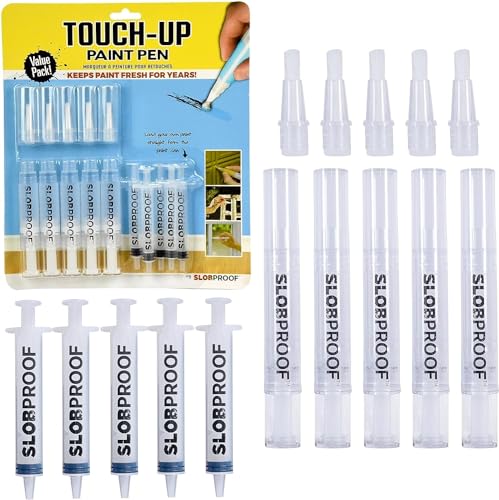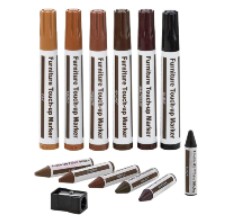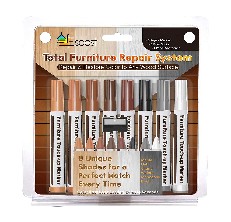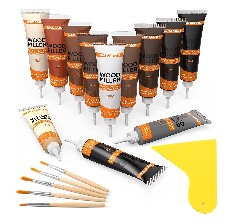The Best Wood Repair Kits of 2024
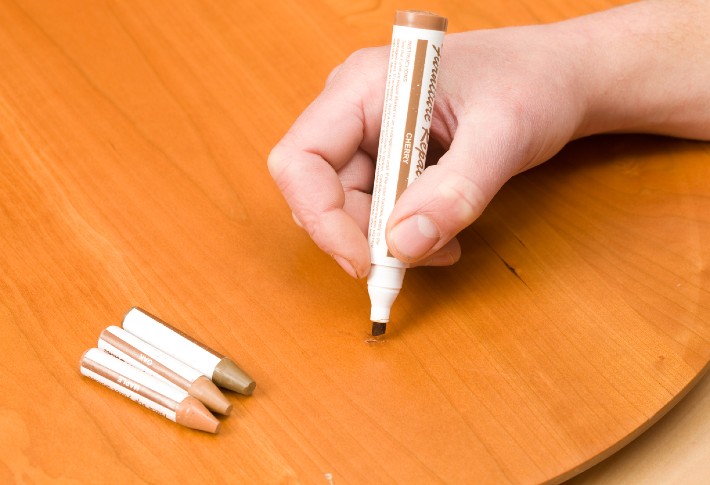
With some of the highest-rated wood repair kits of 2024, you can bring your wooden furniture back into tip-top shape. Using them, you can cover holes, hide cracks, and make the surface look good as new. So whether you’re repairing a chair or fixing up a wall, these wood repair kits are a must-have in any home.
Wood has been used in furniture for hundreds, even thousands of years. It’s a relatively easy material to acquire and work with, and you don’t need any fancy tools to make a solid chair or another piece of furniture. But unlike other materials, wood is surprisingly easy to break unless treated, and even then it’s still prone to damage. Eventually, your wooden chairs will have holes, cracks, and more in them — but, that doesn’t mean they’re irreparable.
Our Top Picks
- Best Overall: Slobproof Refillable Paint Brush Pens Shop Now ➔
- Best for Holes: Coconix Wood Repair Kit Shop Now ➔
- Great for Beginners: DAIXISM Wood Repair Kit Shop Now ➔
- Most Affordable: Escest Wood Repair Kit Shop Now ➔
- Most Versatile: NADAMOO Wood Repair Kit Shop Now ➔
Best Wood Repair Kits
Best Overall
For homeowners and DIY enthusiasts who dread the sight of minor scuffs and scratches on furniture or walls, the Slobproof Touch-Up Paint Pen is a great solution. What really impressed us is how this wood repair kit caters to a variety of surfaces, including walls, furniture, kitchen cabinets, and even floors, making them incredibly versatile. The kit includes refillable pens, which means sustainability is also taken into account. The precision brush tip allows for detailed work, ensuring that even the smallest nicks and scratches can be addressed with accuracy. The convenience of having a 5-in-1 pack means you’re always prepared for any touch-up task, big or small, making this the best wood repair kit on our list.
Pros
- Refillable eco-friendly design
- Suitable for various surfaces
- Easy to store and use anywhere
Cons
- The color may not perfectly match all surfaces
Best for Holes
Dents and scratches are easy enough to cover up with a marker, but what about cracks and holes? In these cases, you’ll have to fill in the gaps with a compound, and Coconix sells such compounds. Their wood repair kit is perfect for covering up holes and cracks found in wooden furniture and walls. With a nozzle that’s easy to fit into holes, you won’t need any extra tools to get the job done. But, in the event that you do, you also get a spatula and applicator brush to apply the formula over flatter surfaces.
Pros
- Great for filling holes and cracks
- Comes with spatula and applicator brush
- Ideal for larger repairs
Cons
- More difficult to use than a marker
Great for Beginners
While using a set of compounds and a brush can be great for more varied repairs, it comes with the disadvantage of being a little more difficult to pull off. And though you can certainly get it right on your first try, there’s also the chance that you mess up and make things even worse. That’s why sets of markers, such as this one by DAIXISM, are ideal for beginners because you won’t need to worry about making as many mistakes. They’re easy to use and intuitive, too, so you can cover up dents and scratches with no trouble at all.
Pros
- Very easy to use
- Comes with six markers and sticks
- Includes a stick sharpener
Cons
- Sharpening sticks can be messy
Most Affordable
Repairing furniture is certainly cheaper than buying new furniture altogether, but that doesn’t mean you should have to spend a lot on repair kits, either. This next set by Escest comes at a very reasonable price, with the standard array of six markers and six wax sticks (or more, if you opt for the bigger kit). You also get a sharpener, ensuring you’ll get the most use possible out of your purchase. Though you may lack some more advanced tools and materials, the items included in the set are more than enough for simple repairs.
Pros
- Great for quick and easy repairs
- Excellent quality for the price
- Covers most wooden finishes
Cons
- Lacks more advanced tools and materials
Most Versatile
The versatility of a wood repair kit depends on how many colors and types of wood it supports as well as what kind of repairs you can make with it. NADAMOO’s Wood Furniture Repair Kit is a great choice for both of these reasons, with many colors to choose from and various ways to apply the compounds. Included in the kit is a set of 12 different wood fillers and a set of brushes with varying shapes. You also get a scraper to clean up after using the filler, and in just a few minutes you can identify and repair just about any minor crack, hole, or scratch on your wooden furniture.
Pros
- Has 12 different wooden fillers
- Includes a set of five brushes
- Very versatile kit
Cons
- Can be a bit tricky to use at first
Buying Guide: Wood Repair Kits
What Are Wood Repair Kits?
Wood repair kits are sets of tools and materials used to cover and conceal imperfections in wooden materials such as furniture and walls. They use compounds, formulas, or markers to conceal any scratches and fill any cracks or holes found in furniture to make them look brand-new.
Parts of a Wood Repair Kit
Markers
Markers are the most self-explanatory type of tool in a wood repair kit. They are used just like any other marker, and they leave behind a color corresponding to the color on the marker itself. Markers are the easiest to use, as all you have to do is run the marker over, and voila, you’ve covered a scratch. Scratches expose the wood beneath, and if they’re of a different color, they can be very easily noticed. Markers can hide the fact that a scratch happened at all and make the exposed wood look like it’s part of the exterior.
Wax sticks
Wax sticks are an alternative to markers. They’re thicker and smaller than markers and leave behind some material. These sticks are also quite easy to use but are a bit more difficult to manage. You need to sharpen the wax sticks regularly if you want them to stay sharp and in shape.
Compound
Compounds are liquid materials used to fill in the holes and gaps of wood. They solidify after a while and become indistinguishable from the rest of the wood as long as the colors are the same. Like markers and wax sticks, compounds come in colors corresponding to the type of wood they’re meant to blend with. They can be a little difficult to work with on their own, which is why you use brushes and spatulas to keep them in place.
Brushes
Brushes help smear and apply compound over a flat surface. Wood repair compounds are quite thick and can be an issue when dealing with flat scratches, which is why you have a brush. The brush flattens and spreads the compound onto the wood, blending with the rest of the material.
Spatula
Spatulas are basically a clean-up tool of sorts for holes and cracks. After filling the space with a compound, there’s a good chance a little extra compound that’ll stick out has been left behind. To make sure it doesn’t look too obvious, you can use the spatula to flatten the excess compound. This results in a flat and clean surface with no bulges.
Tips When Using Wood Repair Kits
Don’t leave the markers open for too long
Wood markers in wood repair kits function much like regular markers. The tips of the markers can dry up if left exposed for a while, and this can make it difficult to dispense the marker fluid in the future. After you’re done with the marker, close it and keep it in a dry and cool area until you need it again. Try to limit its exposure to air as much as possible.
Work quickly
The compounds used to fill in the gaps of the wood can dry fairly quickly, and if you aren’t careful they can dry up before you’ve made the finishing touches. As such, you’ll want to work as quickly as possible, fixing up as much as you can before the compound finally dries up.
People Also Asked
When should I use a wood repair kit?
Wood repair kits are best used when you want to remove or hide scratches, cracks, or other minor damage to wooden furniture or walls.
Are wood repair kits universal?
While wood repair kits try to provide support for as many different wood colors as possible, there may not be options available for your particular type of wood if it’s uncommon and of a unique color.
Are wood repair kits difficult to use?
No. It doesn’t take too much effort to use wood repair kits, and some of them are intuitive enough that you don’t even need any tutorials or instructions to use them properly.
Article Contributors
The Woodsmith Review Team’s product reviews and in-depth guides are here to help you choose the best tools and gear to build great-looking projects confidently. Woodsmith is reader-supported: When you buy through links on our site, we may earn an affiliate commission. Large language models (like Artificial Intelligence) may have been used in the research and creation of the content.
Inquiries regarding specific articles or product testing should be sent to aimperiapt@gmail.com

